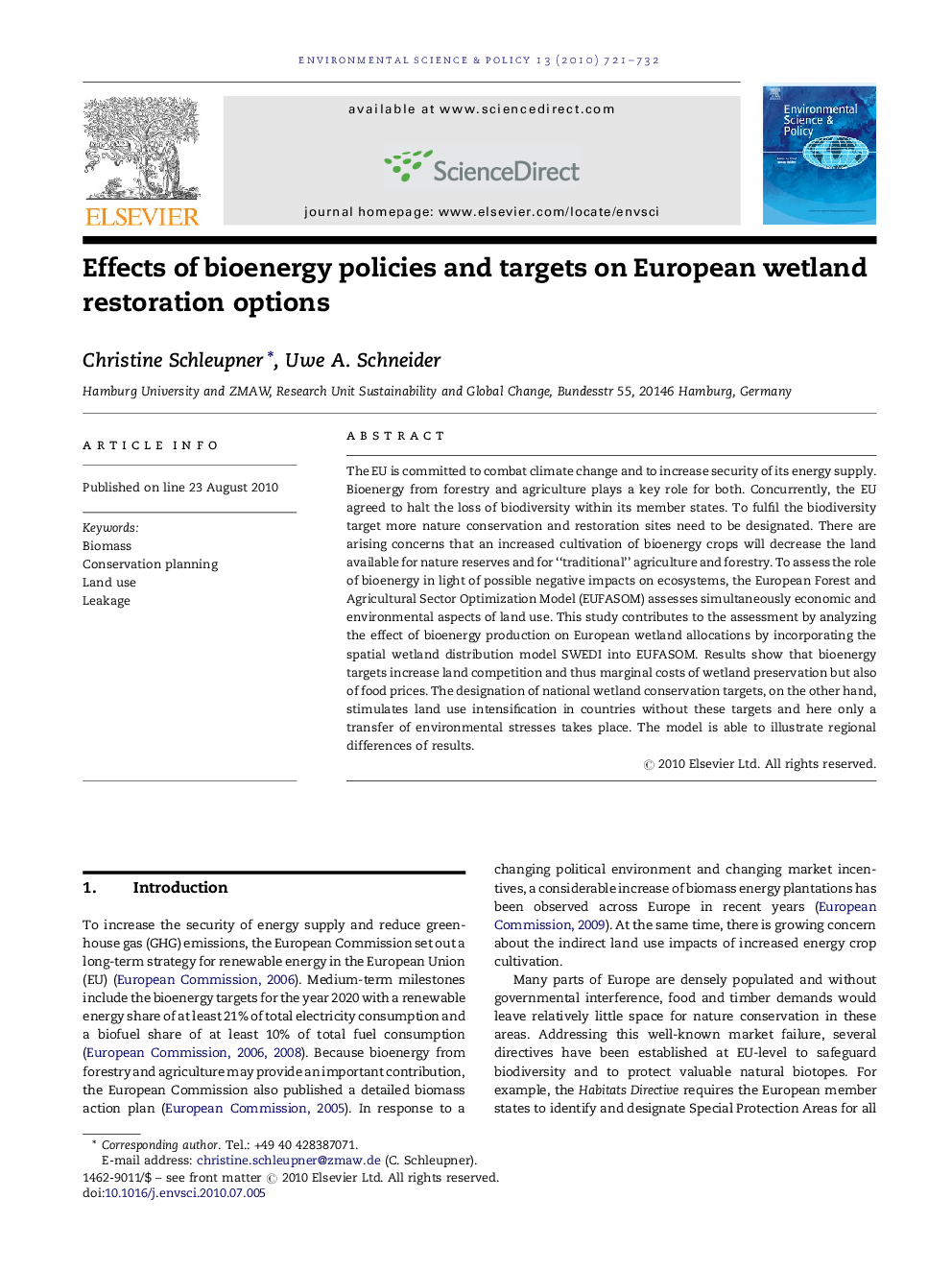| کد مقاله | کد نشریه | سال انتشار | مقاله انگلیسی | نسخه تمام متن |
|---|---|---|---|---|
| 1053941 | 946736 | 2010 | 12 صفحه PDF | دانلود رایگان |

The EU is committed to combat climate change and to increase security of its energy supply. Bioenergy from forestry and agriculture plays a key role for both. Concurrently, the EU agreed to halt the loss of biodiversity within its member states. To fulfil the biodiversity target more nature conservation and restoration sites need to be designated. There are arising concerns that an increased cultivation of bioenergy crops will decrease the land available for nature reserves and for “traditional” agriculture and forestry. To assess the role of bioenergy in light of possible negative impacts on ecosystems, the European Forest and Agricultural Sector Optimization Model (EUFASOM) assesses simultaneously economic and environmental aspects of land use. This study contributes to the assessment by analyzing the effect of bioenergy production on European wetland allocations by incorporating the spatial wetland distribution model SWEDI into EUFASOM. Results show that bioenergy targets increase land competition and thus marginal costs of wetland preservation but also of food prices. The designation of national wetland conservation targets, on the other hand, stimulates land use intensification in countries without these targets and here only a transfer of environmental stresses takes place. The model is able to illustrate regional differences of results.
Figure optionsDownload as PowerPoint slideResearch highlights▶ Effects between bioenergy crop plantations, forest policy, and wetland restoration. ▶ Effectiveness of national environmental policies is decreased by trade complexity. ▶ Insights about complex interactions between different societal objectives. ▶ Land competition increases costs of nature conservation. ▶ Modules useful for large-scale coordination in systematic conservation planning.
Journal: Environmental Science & Policy - Volume 13, Issue 8, December 2010, Pages 721–732